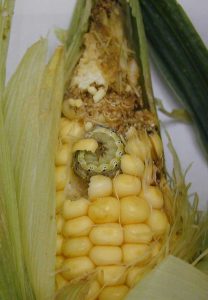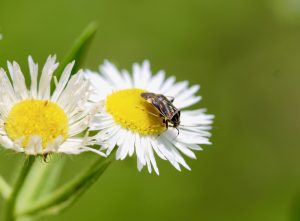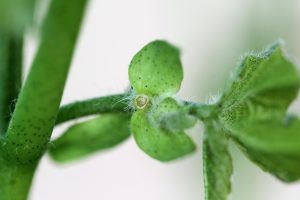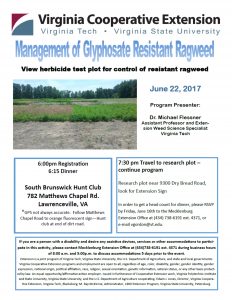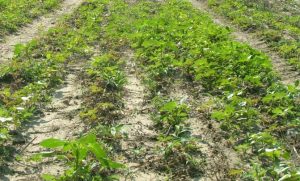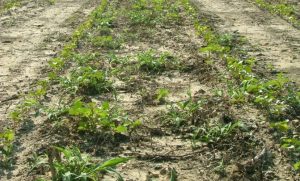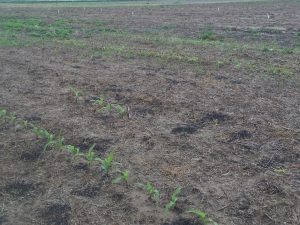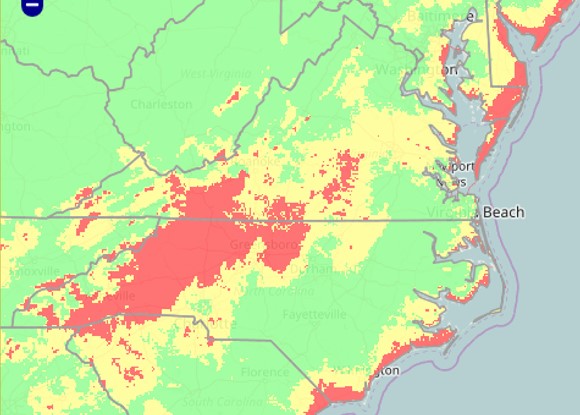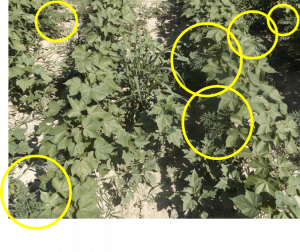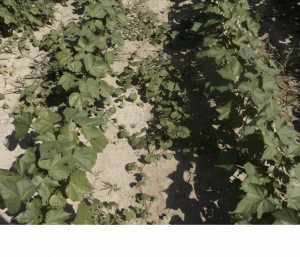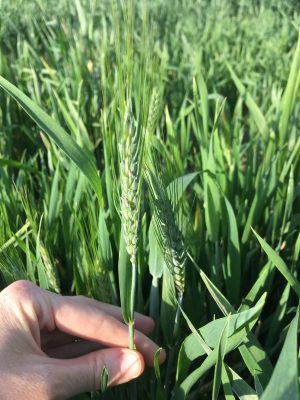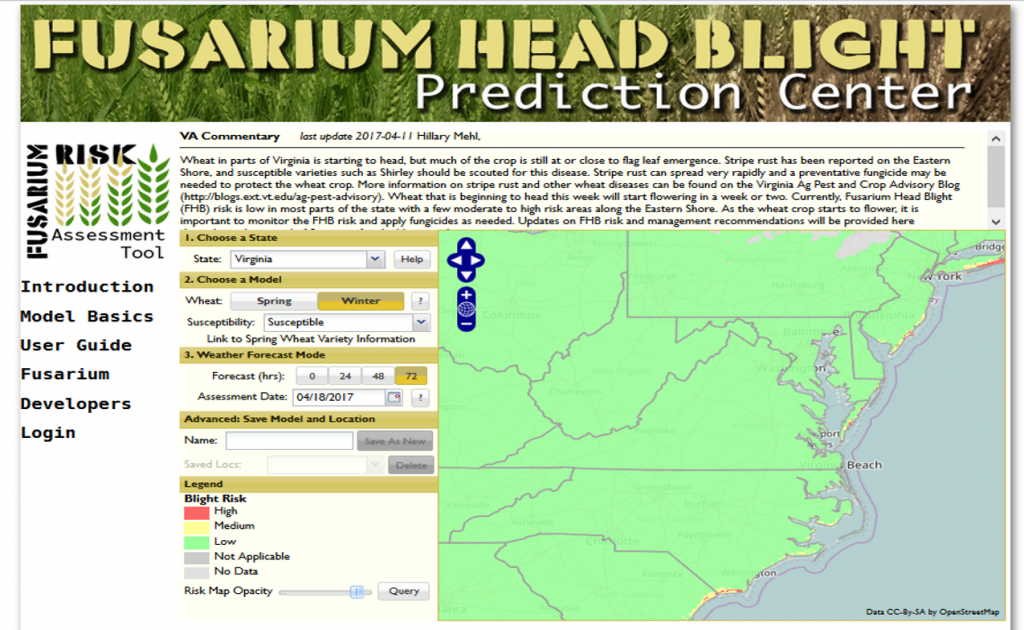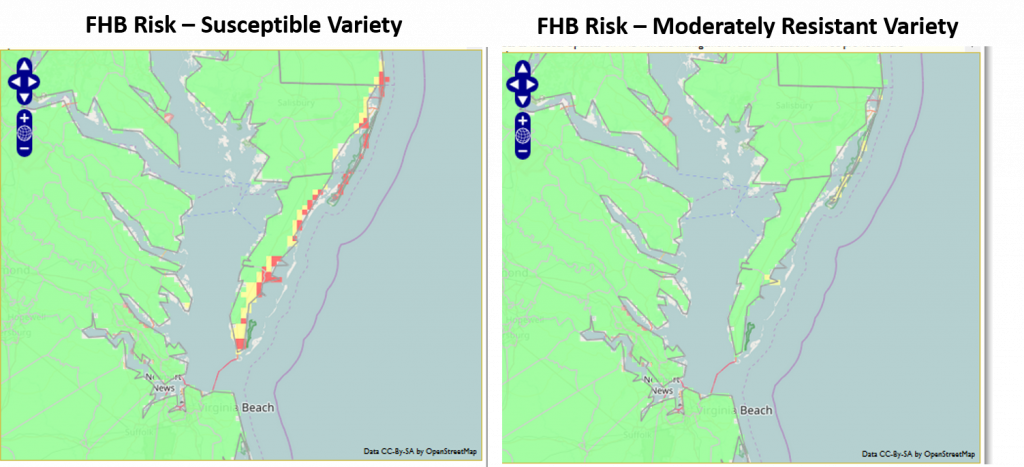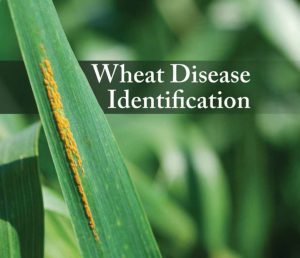Corn earworm and fall armyworm are two important pests of a number of agricultural crops in Virginia. Sweet corn, in particular, is extremely vulnerable to attack by the larvae (or caterpillars) of these moth pests. Monitoring moth catch numbers in pheromone-baited traps can help IPM decision-making. See at the end of this post the Action threshold for spraying insecticides on sweet corn based on corn earworm trap catch. In general trap catch less than 1 per night means relatively low pest pressure and sprays can probably be spaced 5-6 days apart during silking. However, a catch of >1 or >13 moths per night means moderate and high pest pressure, respectively and a more frequent spray interval is justified.
In 2017, we are monitoring these pests on sweet corn farms in 11 different counties in Virginia. Moth Trap Catch Data are being recorded by: Katlyn Catron & John Few (Montgomery Co.); Jason Cooper (Rockingham Co.); Ursula Deitch (Northampton Co.); Helene Doughty (Virginia Beach); Kenner Love (Rappahannock Co.); Laura Maxey Nay (Hanover Co.); Steve Pottorff (Carrol Co.); Stephanie Romelczyk (Westmoreland Co.); Laura Siegle (Amelia Co.); Rebekah Slabach (Halifax Co.); and Mark Sutphin (Frederick Co.)
Here are the trap catch results (moths per night) for several locations around Virginia for this week (note we do not have data for all locations):
| Region | County | Field | CEW moths/night | FAW moths/night |
| Eastern Shore | Accomack | ESAREC | 1.1 | 0 |
| Eastern Shore | Virginia Beach | Pungo 1 | 1.6 | 0 |
| Eastern Shore | Virginia Beach | Pungo 2 | 3.9 | 0 |
| Eastern Shore | Northampton | Bridge Tunnel | 6.6 | 0 |
| Eastern Shore | Northampton | Capeville 1 | 3.6 | 0 |
| Eastern Shore | Northampton | Capeville 2 | 0.0 | 0 |
| Eastern Shore | Northampton | Eastville | 0.6 | 0 |
| Eastern Shore | Northampton | Nassawaddox | 1.0 | 0 |
| Piedmont | Amelia | Field 1 | 2.7 | 0 |
| Piedmont | Hanover | Field 1 | 2.1 | 0 |
| Piedmont | Hanover | Field 2 | 1.0 | 0 |
| Northern Neck | Westmoreland | Field 1 | 3.0 | 0 |
| Shenandoah Valley | Rappahannock | Field 1 | 1.0 | 0 |
| Shenandoah Valley | Frederick | Field 1 | 2.3 | 0 |
| Shenandoah Valley | Frederick | Field 2 | 3.5 | 0 |
| New River Valley | Montgomery | Whitethorne | 1.9 | 0 |
| New River Valley | Montgomery | Wall field corn | 1.1 | 0 |
| New River Valley | Montgomery | Wall sweet corn | 20.8 | 0 |
| Action threshold: Number of Corn Earworm Moths Caught in Pheromone trap | |||
| Per Day | Per 5 Days | Per Week | Spray Interval for sweet corn |
| <0.2 | <1 | <1.4 | No Spray |
| 0.2 – 0.5 | 1.0 – 2.5 | 1.4 – 3.5 | 6 Day |
| 0.5 – 1.0 | 2.5 – 5.0 | 3.5 – 7.0 | 5 Day |
| 1.0 – 13.0 | 5.0 – 65.0 | 7.0 – 91.0 | 4 Day |
| >13.0 | >65.0 | >91.0 | 3 Day |

